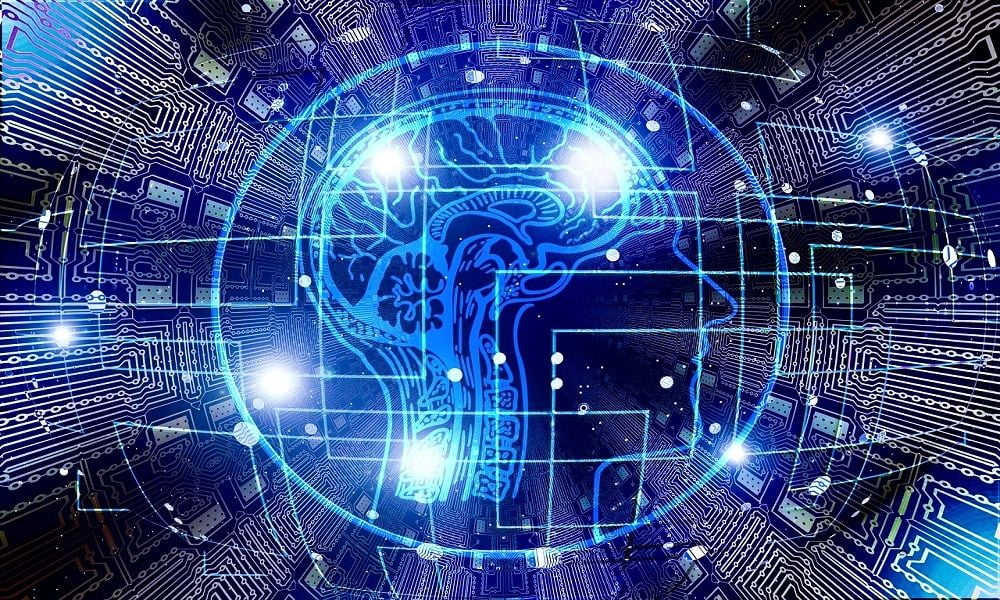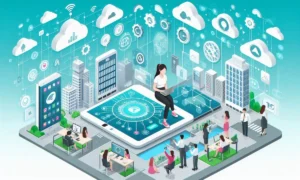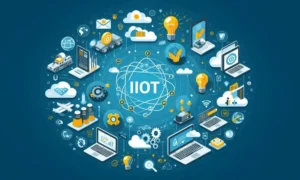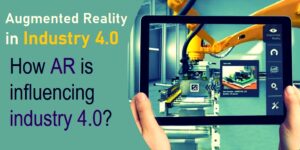Artificial intelligence (AI) can transform every walk of life and can augment the work humans can do. In this article, we will discuss the Top 10 Hot Artificial Intelligence technologies that one should know.

Top 10 Hot Artificial Intelligence Technologies You Need to Know
Artificial intelligence (AI) is a large-scale branch of computer science that creates systems capable of learning and reasoning like a human being.
Artificial intelligence assists in every area of our lives and forms the basis of all computer learning and is the future of all complex decision-making processes. AI technologies are a great asset to human beings, they are programmed to reduce human effort as much as possible.
Artificial intelligence has created a storm in every industry and has a profound impact on every sector of society. It has changed the way we live in the digital age with innovative technologies.
Artificial intelligence is gaining importance in this era where computing and digitization are growing exponentially. Here is the list of Top 10 Artificial Intelligence Technologies that are taking innovation to next level and changing the various areas of our daily lives:
1. Machine Learning
Machine Learning (ML) is a branch of Artificial Intelligence that can be used in the real world. The idea is fundamentally to be able to teach a model so that it can make its own predictions without our supervision later on.
In short, machine learning is the ability of a computer to learn without having been programmed.
Machine Learning algorithms provide computers with the ability to identify patterns in massive data and develop predictions (predictive analysis).
With this technique, you can predict the impact of a new product on the market, determine what the weather will do tomorrow, or even estimate who will be the next president of a particular country. All that task that involves predicting and forecasting based on past facts and data can be modeled with a Machine Learning algorithm.
Machine learning is a tool that companies must implement as part of their processes. ML can help innovate and provide new solutions and support the company in making decisions.
2. Deep Learning
Deep learning (DL) is a form of machine learning that utilizes a multi-layered structure of algorithms and models data patterns as complex, multi-layered networks. Since deep learning is the most general way of modeling a problem, it has the potential to solve challenging problems – such as computer vision and natural language processing – that goes beyond both traditional programming and other machine learning techniques.
Deep learning can produce useful results where other methods fail, it can also build more accurate models. It can reduce the time it takes to build a useful model. However, the formation of deep learning models requires a great deal of computing power.
Today’s best in-depth image classification models can identify various object catalogs with HD color resolution. Deep neural network algorithms are more innovative and complex than a neural network. People sometimes use hybrid vision models, which combine deep learning with classic machine learning algorithms that recognize images, make predictions and perform other specific subtasks.
3. Artificial Neural Networks
An artificial Neural Network (ANN) is a series of algorithms that look for relationships in a data set. It consists of interconnected nodes that give it the appearance of a biological neural network and from which it takes its name.
A neural network is always composed of an input layer, an output layer (if there is only one layer in the neural network, the input layer matches the output layer) and can contain 0 or more layers hidden. The concept of Deep Learning was born as a result of using a large number of hidden layers in networks.
Training a neural network consists of adjusting each of the weights of the inputs of all the neurons that are part of the neural network so that the responses of the output layer fit as closely as possible to the data that we know.
The artificial neural network has the ability to complete tasks with infinite combinations. This makes it ideal considering the upward trend of applications based on Big Data.
4. Computer Vision
Computer vision is a field of artificial intelligence associated with the analysis of images and videos, which includes a set of techniques that give the computer the ability to “see” and extract information from what has been seen.
Computer vision algorithms are generally based on convolutional neural networks or CNN. The CNNs typically use convolutional, clustered, ReLU (Rectified Linear Unit), fully connected, and loss layers to simulate a visual cortex.
Computer vision identifies and often locates objects in digital photos and videos. In some cases, computer vision systems are more accurate than human vision.
Computer vision is useful to extract information, for example, from documents such as a passport (London airport allows you to leave from the airport when you have scanned your passport and read your information), a bank card (this is how Apple allows you to insert your debit or credit card into the wallet through a photograph), contracts or invoices, among others.
5. Natural Language Processing
Human beings are sociable by nature. Living in a society means communicating, and human beings do it through language in its different aspects: oral, written, or visual. It is impossible to request or offer any service without the exchange of information.
Natural language processing (NLP) is a subfield of computer science, linguistics, and artificial intelligence, concerned with the interactions between machines and human language. NLP gives the machines the ability to read and analyze large amounts of natural language data and understand and derive meaning from human languages in much the same way human beings can.
Natural language processing can be used to classify texts according to their content, to develop chatbots, translate between languages, write documents, retrieve information … This technique is involved there where an interpretation of human language is required, in any of its languages, to be used by a machine.
6. Biometrics
Biometrics is the automatic identification of individuals based on their biological characteristics and behavior. Biometrics is based on the recognition of a physical and non-transferable characteristic of people.
The main use of biometrics is the authentication of the user to prove their intervention in any process or to have access to certain information or services. One of them is the digital signature of documents.
The biometric signature adds physical and irrefutable evidence to create a valid digital signature in all aspects. Through this resource, various biometric factors that identify the signer are recorded.
The fingerprint is one of the first biometric evidences that began to be implemented in mobile technology. It is undoubtedly a factor that provides a high degree of security since it is a unique and non-transferable criterion, very difficult to supplant.
Iris recognition or iris scanning is an automated method of biometric identification that uses visible and near-infrared light to take a high-contrast photograph of a person’s iris.
Biometrics, combined with the digital signature, gives rise to a truly secure and efficient authentication method that improves the user experience.
7. Speech Recognition
The application of artificial intelligence that we use on a daily basis is voice recognition (speech recognition).
If today you can use voice assistants like Siri or Alexa, or if you can solve your problems with your bank or your phone company by talking to a virtual assistant, that’s thanks to artificial intelligence technology.
The possibilities are endless; From being able to drive your car with your voice to being able to shop with it. But the goal is not only to simplify people’s lives with this technology; There is a lot. In the areas of national and international security, speech recognition mechanisms are already used to detect and predict criminal actions such as murders or attacks.
However, these systems are not trivial and carry behind them a large number of algorithms and techniques, such as Markov chains or artificial neuron networks, among many others.
8. Face Recognition
Face detection is a system capable of identifying the presence of a human face within a digital image or video. One of the most important applications of face detection is facial recognition that goes way beyond identifying when a human face is present.
Facial recognition is a biometric recognition software that is capable of uniquely identifying or verifying a person’s face by comparing and analyzing patterns based on a person’s facial features.
Facial recognition consists of a set of algorithms that identify a person’s face according to the available databases. AI-based software can instantaneously search databases of faces, analyze faces in images and videos, compare them to one or multiple faces and identify a specific face.
Face detection and recognition in recent years and even today, is experiencing an amplification in terms of recognition technologies. This technology has been shown to be entering most day-to-day processes.
There are many applications of facial recognition technology. It is used to unlock phones and specific apps. Banks, airports, retail stores, stadiums, and other facilities use this technology to reduce crime and prevent violence.
9. Robotic Process Automation (RPA)
The era of the fourth industrial revolution (Industry 4.0) has brought with it a new way of doing business through automation and data exchange, where machines and humans work together for the benefit of companies.
Advances in artificial intelligence, robotics, and edge computing herald a new era of automation, in which machines match or exceed human performance in a wide range of work activities.
Robotic Process Automation (RPA) is a set of technologies for the automation of business processes. RPA software robots communicate with systems and applications to streamline processes and reduce the workload on humans.
RPA technology allows you to execute tasks 24×7 precisely, which makes it easier to optimize processes, improve quality, reduce delivery times and even better manage peak demand.
It improves profitability by having a high and short-term return on investment since in general, it does not involve high integration costs.
RPA allows to imitate actions of a person in a computer system, for example, authenticate an application, move files and folders, read and write to databases; extract content from documents, images, web pages, and interact with emails, copy and paste information, among many other actions. There are many more benefits of robotic process automation in business and industrial sectors.
RPA is the logical next step to greatly reduce the need for employees to perform high-volume, rule-based tasks.
Read Also: 10 Examples of Robotic Process Automation Use Cases
10. Chatbots
A chatbot is a computer program with which it is possible to have a conversation, whether we want to ask for some kind of information or to carry out an action. Chatbots have the possibility to learn about our tastes and preferences over time.
A virtual agent is a conversational chatbot that uses AI technologies to understand user intent, analyze patterns in a conversation and interact effectively with human users.
One of the great advantages of chatbots is that, unlike mobile or computer applications, they don’t need to be downloaded, they do not take up space in the phone memory and they do not need to be updated regularly. The other thing is that you can integrate multiple bots in the same chat. In this way, you would avoid jumping from one app to another depending on what you need at all times.
An autonomous robot is undoubtedly the most notorious advance in the field of Artificial Intelligence.
All the aforementioned applications and many others are needed to carry out an autonomous system, which is capable of interpreting the signals of any environment and being able to draw a solution in real-time and without supervision.






[…] AI technologies have already received a lot of buzz in the past decade, but they are still on the list of the top 10 technology trends due to their remarkable impact on how we live, work and play in the early stages. AI is now playing an important role in digital transformation. […]